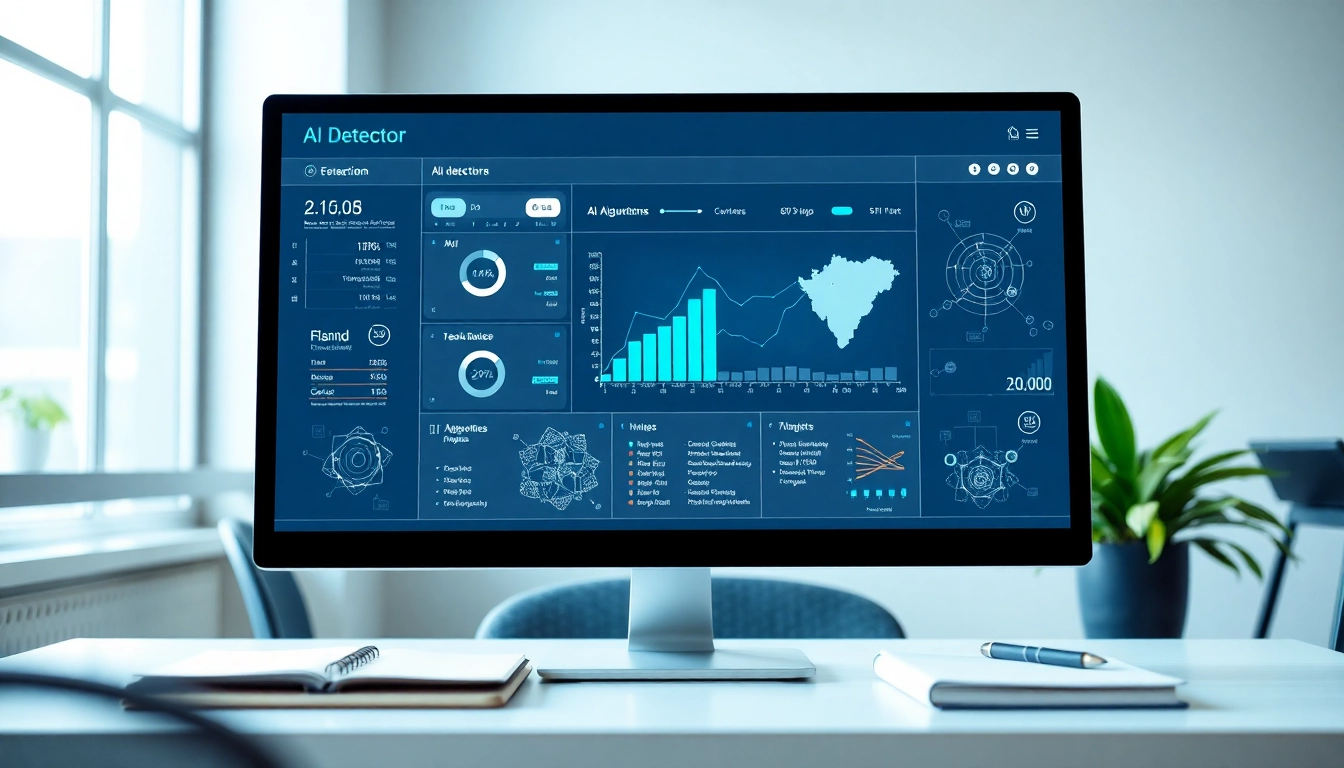Understanding the Basics of Data Analytics
In today’s data-driven world, understanding the principles of data analytics is crucial for any business aiming to succeed. Data analytics involves using various techniques and tools to analyze data and extract meaningful insights. This article aims to provide a comprehensive understanding of data analytics, including its significance in the business realm, core techniques for data gathering, and advanced analytics implementations. We will delve into various methods and best practices that can help you harness the power of data to drive better decision-making and achieve organizational goals. For more resources and insights, explore www.informaticsview.com.
What is Data Analytics?
Data analytics is the systematic computational analysis of data that encompasses various techniques from statistics and modeling. At its core, data analytics is about understanding trends and patterns in data to make informed decisions. This art and science involve the collection, processing, and analysis of vast amounts of data to turn data into actionable insights. In simpler terms, it’s about leveraging data to answer specific business questions or, more broadly, to understand the performance and state of an organization.
Importance of Data Analytics in Business
Data analytics plays a pivotal role in the modern business landscape. Its importance can be summarized through the following points:
- Informed Decision-Making: Businesses can base their decisions on hard evidence rather than gut instinct, leading to more reliable outcomes.
- Improved Customer Experience: By analyzing customer data, businesses can cater to customer needs more effectively and provide personalized experiences.
- Cost Efficiency: Identifying inefficiencies within operational processes allows businesses to streamline for better productivity.
- Competitive Advantage: Analyzing market trends can offer insights that may help anticipate competitors’ actions and consumer needs.
Key Components of Effective Data Analysis
To conduct effective data analysis, certain components are essential:
- Data Collection: Gathering accurate and relevant data from various sources.
- Data Cleaning: Ensuring the data is accurate and free from errors is vital for obtaining reliable results.
- Data Processing: Organizing data in a suitable format for analysis.
- Data Visualization: The use of charts and graphs to represent data visually, making it easier to interpret and communicate findings.
- Reporting: Communicating insights through reports that detail the analysis results and actionable strategies.
Core Techniques for Data Gathering
The foundation of effective data analytics lies in robust data gathering techniques. The choice of technique often depends on the type of data being collected and the specific aims of the analysis.
Quantitative vs. Qualitative Data
Data can be broadly classified into two categories: quantitative and qualitative.
- Quantitative Data: This type of data is expressed numerically and can include measures such as demographics, sales numbers, and website traffic. It allows for statistical analysis, making it easy to draw conclusions based on numerical trends and patterns.
- Qualitative Data: This involves non-numerical data and can include opinions, feedback, and descriptions. Though more subjective, qualitative data adds depth to quantitative insights by providing a contextual understanding of customer behavior or preferences.
Tools for Collecting Data Efficiently
Utilizing the right tools is essential for efficient data collection. Some popular tools include:
- Surveys and Questionnaires: Tools like Google Forms and SurveyMonkey help gather qualitative data directly from customers.
- Web Analytics Tools: Google Analytics is essential for tracking website traffic and understanding user behavior.
- Data Management Platforms (DMP): Tools like Adobe Audience Manager help synthesize data from multiple sources for a consolidated view.
Common Challenges in Data Gathering
While data gathering is crucial, it is often fraught with challenges such as:
- Data Privacy Concerns: Compliance with regulations like GDPR can complicate data collection strategies.
- Data Quality Issues: Incomplete or inaccurate data can lead to faulty analysis.
- Resource Constraints: Limited time and budget can hinder thorough data gathering and analysis.
Analyzing Data for Strategic Decisions
Once data has been gathered, the next step is analysis. Utilizing the right methods for interpretation is paramount for informed decision-making.
Data Analysis Methods Explained
Several analysis methods can be employed depending on the nature of data and business objectives:
- Descriptive Analysis: Summarizes historical data to identify trends and patterns.
- Diagnostic Analysis: Focuses on understanding the reasons behind trends observed in the descriptive stage.
- Predictive Analysis: Uses statistical algorithms and machine learning techniques to identify the likelihood of future outcomes based on historical data.
- Prescriptive Analysis: Suggests actions based on the analysis, helping organizations to make decisions that impact future outcomes.
Case Studies of Successful Data Analysis
Learning from real-world applications of data analysis can provide invaluable insights. For example:
- Netflix: By analyzing viewing habits and preferences, Netflix has successfully personalized content recommendations, improving viewer satisfaction and retention rates.
- Amazon: Using data analytics for inventory management allows Amazon to predict demand, optimize stock levels, and reduce waste.
Best Practices for Interpreting Results
To make the most out of data analysis, consider the following best practices:
- Contextualize Data: Understanding the context around the data is crucial for proper interpretation.
- Seek Collaborative Insights: Engaging with cross-functional teams can enrich interpretation and yield diverse perspectives.
- Be Aware of Overfitting: Overanalyzing data may uncover nuances that do not necessarily correlate with actionable insight or trends.
Implementing Advanced Analytics
Organizations that wish to stay ahead often need to implement advanced analytics techniques. Leveraging innovative methodologies can facilitate deeper insights into customer behavior and operational efficiency.
Predictive Analytics Techniques
Predictive analytics focuses on forecasting future probabilities and trends based on historical data. Techniques commonly used include:
- Regression Analysis: A statistical method that allows you to understand relationships between independent and dependent variables.
- Time Series Analysis: Analyzes data points collected or recorded at specific intervals over time to predict future trends.
Integrating Machine Learning into Analysis
Machine learning (ML) algorithms can enhance data analysis by learning from data patterns and improving their predictive capabilities over time. Key benefits of integrating ML include:
- Automation: ML can automate complex analyses that would normally require significant human input.
- Scalability: As data grows, ML models can adapt and provide insights without the need for excessive recalibration.
Overcoming Implementation Barriers
Implementing advanced analytics may be met with several barriers, including:
- Talent Shortage: Skilled data scientists and analysts are often in high demand.
- Integration Difficulties: Merging new analytics tools with existing systems can be challenging.
- Data Silos: In organizations, data may be stored in isolated systems, making comprehensive analysis difficult.
Measuring Success and Performance Metrics
The final step in the data analytics process involves measuring the success of your data-driven initiatives. Choosing appropriate performance metrics is essential for evaluating the impact of your strategies.
Key Performance Indicators (KPIs) to Track
KPIs vary depending on the goals of the organization but may include:
- Customer Acquisition Cost (CAC): The cost associated with acquiring a new customer.
- Customer Lifetime Value (CLV): The total revenue expected from a customer over their relationship with the company.
- Churn Rate: The percentage of customers who stop using your service over a specific period.
Evaluating the Impact of Data-Driven Decisions
Once KPIs are monitored, evaluating the overall impact of data-driven decisions is essential:
- Conduct A/B Testing: This allows businesses to compare different strategies to see which performs better.
- Regular Review Cycles: Continually reviewing performance data can lead to more agile decision-making processes.
Continuous Improvement in Data Analytics
Data analytics is not a one-off project but an ongoing process. Continuous improvement can be achieved by:
- Staying Updated: Keeping abreast of the latest analytics tools and techniques is vital for sustained growth.
- Encouraging a Data-Driven Culture: Fostering an environment that values data-driven decision-making across all levels of the organization leads to better insights.
- Investing in Training: Providing ongoing education for team members ensures that analytical skills are enhanced and relevant to current market needs.
Conclusion
In summary, data analytics is a multifaceted discipline that offers a wealth of opportunities for businesses seeking to enhance decision-making, improve customer experiences, and achieve operational efficiency. By understanding the principles of data analytics, employing effective gathering techniques, analyzing data thoughtfully, and implementing advanced methodologies, organizations can harness the full potential of data. As the business landscape continues to evolve, the capability to leverage data analytics will play an increasingly indispensable role in achieving competitive advantage and driving success in your organization.















Leave a Reply